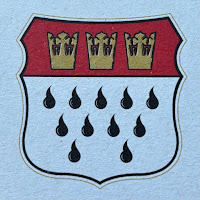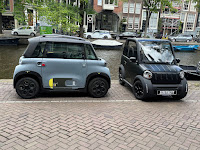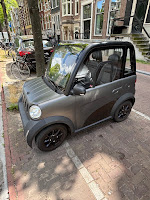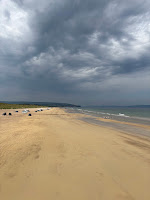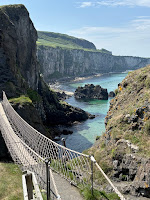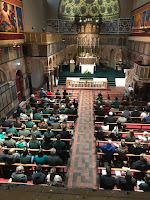6 Parvis Notre-Dame, Pl. Jean-Paul II, Paris
Most times, I can show up at a liturgy and know what's going on: Trappist Lauds, a Parish's Evening Prayer, a service of the Word, Eucharist (in whatever language, with or without a priest). But on Friday, the fourth of July, we stumbled into Notre Dame de Paris, the newly reopened Cathedral.
And I had no idea what was taking place before my eyes.
Liturgy at Notre Dame is a unique thing, in and of itself. Any kind of prayer has to take place while there are thousands of pilgrims swirling around the periphery. The actions of these pilgrims can cover the entire behavioral spectrum: some are waiting in line to purchase a bauble from the gift shop; some want to jump the ropes and join in the prayer; some are taking selfies (watch out for those accurséd sticks!); some are wide-eyed and intent on the sacredness of the moment; some are playing word games on their cell phones. Holding back this tide of humanity is the happy task of dozens of docents, and their job is to both firmly but compassionately keep these hordes in line.
I was part of that horde last Friday, watching what appeared to be a Communion procession. But there were no vessels on the altar, and the color being used that day was red – even though in the liturgical calendar there was no martyrdom intended to be observed.
Carefully acknowledging the docent who had his eye on me, I moved closer. Then I realized that this was not a Eucharistic procession – yet it was a procession. It was the first Friday of the month, and on those days, at three o'clock, the encased crown of thorns is taken from Notre Dame's reliquary. It is then held such that all the faithful can come before this relic and either kiss or touch its glass encasement.
The liturgy that was taking place was a Veneration of the Crown of Thorns.
By way of background: the Crown of Thorns came to Paris through the efforts of King Louis IX (sainted by the Church), who somehow managed to bring it to France by way of Constantinople. He then built the Church of Sainte Chapelle to house this and many other relics.
My wife and I managed to join the procession that was unfolding before us. Step by step, we approached this ancient artifact that was so intimately a part of the Crucifixion. I bent down, lightly kissed the glass protective ring, and touched it with my hand.
What did this mean for me? What did I take from this moment?
For years, I have been toiling to create a musical setting of the Gospel of Saint John – the Passion for Good Friday – one that could be used in a liturgical setting. I started out with the NABRE, which was accepted by Oregon Catholic Press but ultimately rejected by the copyright holders of the text. After more negotiations, I am now using the ecumenical translation, the NRSV, and publishing the work through Simply Liturgical.There was a personal rededication that took place last week, being in that procession, and reflecting on the action of reverencing the Crown of Thorns. It was a rededication to the task I now am facing.
Our liturgy is filled with stories, with music, with actions. To restrict those artistic endeavors is to restrict the movements of the Spirit. I came away from that procession all the more dedicated, as both an artist and a person of faith, committed to the task of setting this pivotal story to song, such that it could be proclaimed by most parish choirs.






















